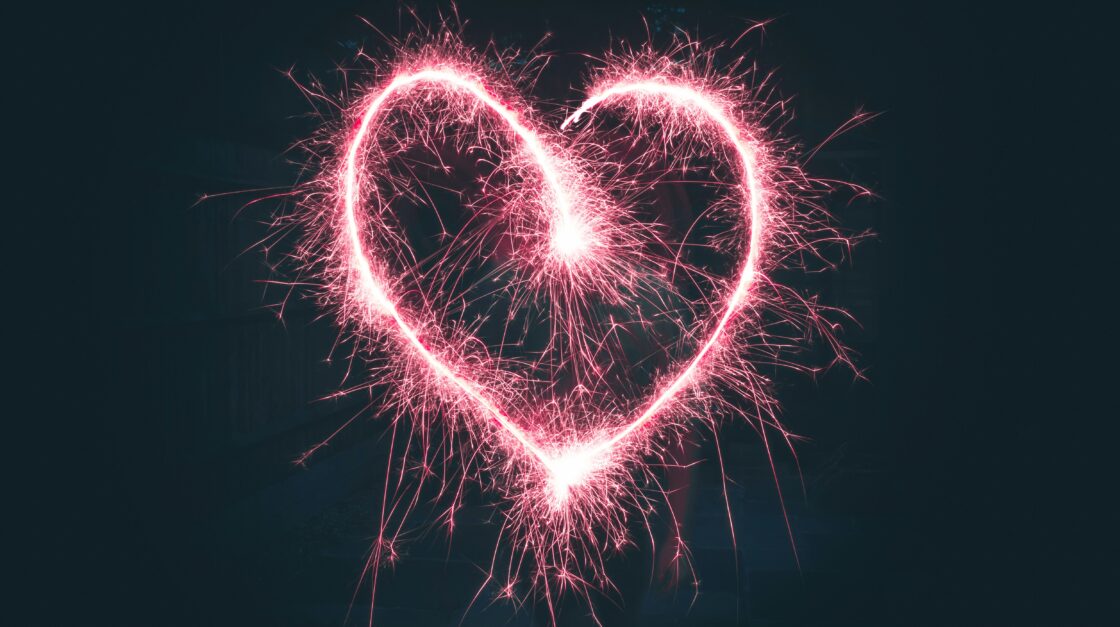Want to learn more about writing romance? Check out our course offerings and independent coaching with instructor Jeanne De Vita.
My novel reading interests tend to be diverse, but I’ve never considered myself much of a romance novel reader. In my twenties and thirties, I was almost completely averse to them and would throw up a hand, shake my head, and back away slowly if someone tried to recommend one to me. I strive to not be a snobbish reader, but I must admit, for a time, I considered romance novels unworthy of my sacred reading time. However, this month, after finishing Abbi Waxman’s The Bookish Life of Nina Hill, I immediately started in on April Henry’s brand-new release, Funny Story. Back to back romance reads? I thought to myself, “When did I become such an avid romance novel reader?”
As much as I try to deny that romance had ever been my thing, I do have a long history with the genre. I’m the youngest of three daughters, and my sisters are nearly ten years older than me. Between them and my mom, books written for adults were just easier to come by when I was young. So, starting a year or two before I turned ten, that’s mostly what I read. Around that time, in the late 1980s, I had my first foray into a romance read. I remember finding my sister’s copy of Forever by Judy Blume. I might have passed it by, but several pages were dog-eared, and I was a curious kid. If you’ve read Forever, you likely know exactly which pages I’m referring to, and, wow, my little adolescent world was rocked.
During those same years, Danielle Steel was at the height of her career and my mother was a loyal fan. Each time Steel released a new romantic saga, the hardcover would materialize in my mom’s hands. She’d have the first read, then pass it down to my eagerly awaiting sisters. I was likely ten or eleven when I swiped Fine Things off the bookshelf when no one was looking. I laughed; I cried; I was completely swept up, and in over my head. I’d go on to read a few more before I tired of the tropes and moved on. I don’t remember many details from the plots of Steel’s novels, but I do remember feeling engrossed in her settings and emotionally griped by the passion between her characters.
A couple of years later, as I started middle school, I became friends with a high school girl. She was also an avid reader. We’d spend weekends lounging about reading and discussing what we were reading. (The days before the internet and smartphones were really a different time!) She kept me supplied with classic bodice rippers and introduced me to the dark world of V.C. Andrews.
Sometime in high school, I grew out of reading romance. Thinking back, I realize that while I enjoyed getting caught up in the passion of relationships, I stopped enjoying books where male characters were too often depicted as overbearing, dominating forces of masculinity powering over weaker, damsel-in-distress females. And for the next couple of decades, I steered clear of most books labeled romance.
Now, in my forties, I’ve returned to the genre, and I’m quite enjoying it. What brought me back? What’s changed? I believe the genre itself has modernized in many ways. Here’s my running list of the evolution of the romance genre from the 1980s to the 2020s:
- Diversity and representation: One of the most notable changes in the romance genre has been the increased representation of diverse characters and relationships. While earlier romance novels often featured predominantly white, heterosexual couples, modern romance novels showcase a much broader range of identities, including LGBTQ+ characters, BIPOC characters, and characters with diverse backgrounds and experiences.
- Stronger female protagonists: While traditional romance novels often featured passive, submissive heroines, modern romance novels tend to feature stronger, more independent female protagonists who actively pursue their own desires and who can take care of themselves. These modern heroines are often depicted as equal partners in their relationships, challenging traditional gender roles and stereotypes.
- Subgenres and niche markets: The romance genre has expanded to include a multitude of subgenres and niche markets to cater to diverse reader preferences. From paranormal romance to romantic suspense to romantasy, there’s now a subgenre for almost every imaginable taste, allowing readers to find stories that resonate with their interests.
- Shift in tropes and themes: While classic romance tropes like “the power-hungry billionaire CEO” or “the down-on-her-luck small-town girl” are still prevalent, there has been a shift in the portrayal and interpretation of these tropes. Authors are increasingly subverting and reinventing traditional romance tropes to create more complex and nuanced stories that defy expectations and offer fresh perspectives.
- Inclusion of social issues: Modern romance novels often incorporate social issues and current events into their narratives, addressing topics such as consent, mental health, feminism, and societal inequalities. These novels offer readers not only an engaging read but also opportunities for reflection and discussion on important real-world issues.
- Self-publishing and the Internet: The rise of self-publishing platforms has democratized the publishing industry, allowing more authors to bypass traditional gatekeepers and bring their stories directly to readers. This has led to an explosion of indie romance authors and a greater diversity of voices and stories within the genre. Social media has also helped alter traditions in all genres, including romance. Readers now have greater opportunities to connect with authors, discuss books, and share recommendations. This has led to a more dynamic and interactive relationship between authors and readers, with authors often incorporating reader feedback and preferences into their writing.
The romance novel genre has undergone significant transformations during the last few decades, reflecting changing societal attitudes, reader preferences, and tech advancements. Yet at its core, the genre remains committed to providing readers with dramatic stories of love, heartache, passion, and the often promised happily ever afters.
Recommended Witty Romance Reads
There’s another shift in the evolution of romance novels that I didn’t mention above, and it’s my favorite. I call it the “witty banter” effect. Many of today’s romance authors have perfected the art of writing witty banter between their love interests, and I can’t get enough! I find intelligent and humorous exchanges on the page positively titillating. It is the number one reason why I have become such a fan (again) of the romance genre.
Here are a few of my favorite, wittiest romantic reads:
- Book Lovers by Emily Henry – In a quaint, small town bookstore, two rivals—one a literary agent, the other an editor—find common ground in their shared love for literature, but as they compete for a prestigious job in NYC, they discover that their greatest challenge may be resisting the growing attraction between them.
- The Hating Game by Sally Thorne – In a high-stakes game of publishing corporate rivalry, Lucy and Joshua engage in a battle of wits and one-upmanship, but as they navigate office politics and unexpected sparks fly, they realize that love may be more important than a promotion.
- Red, White and Royal Blue by Casey McQuiston – When a feud between the First Son of the United States and a British prince escalates into a PR disaster, they’re forced to stage a fake friendship, but as their facade crumbles, they must confront their true feelings amidst the glare of the public eye.
- The Dead Romantics by Ashley Poston – A ghostwriter falls for a ghost in this surprisingly deep, semi-paranormal romance. Amidst the faded grandeur of a possibly haunted funeral home, Florence and Ben embark on a journey to unravel a century-old mystery, but as they delve deeper, they uncover secrets that could shatter their hearts and souls.
- The Unhoneymooners by Kristina Lauren – Forced to take her sister’s honeymoon trip with her sworn enemy, Olive braces herself for disaster, but as they navigate tropical mishaps and unexpected chemistry, they realize that love may be the ultimate unexpected destination.
- Chef’s Kiss by T.J. Alexander – Set in the delicious and steamy world of culinary competition, a talented chef and a skeptical food critic clash over tastes and principles, but as they explore the flavors of love and forgiveness, they discover that the perfect recipe for romance may be closer than they think.

